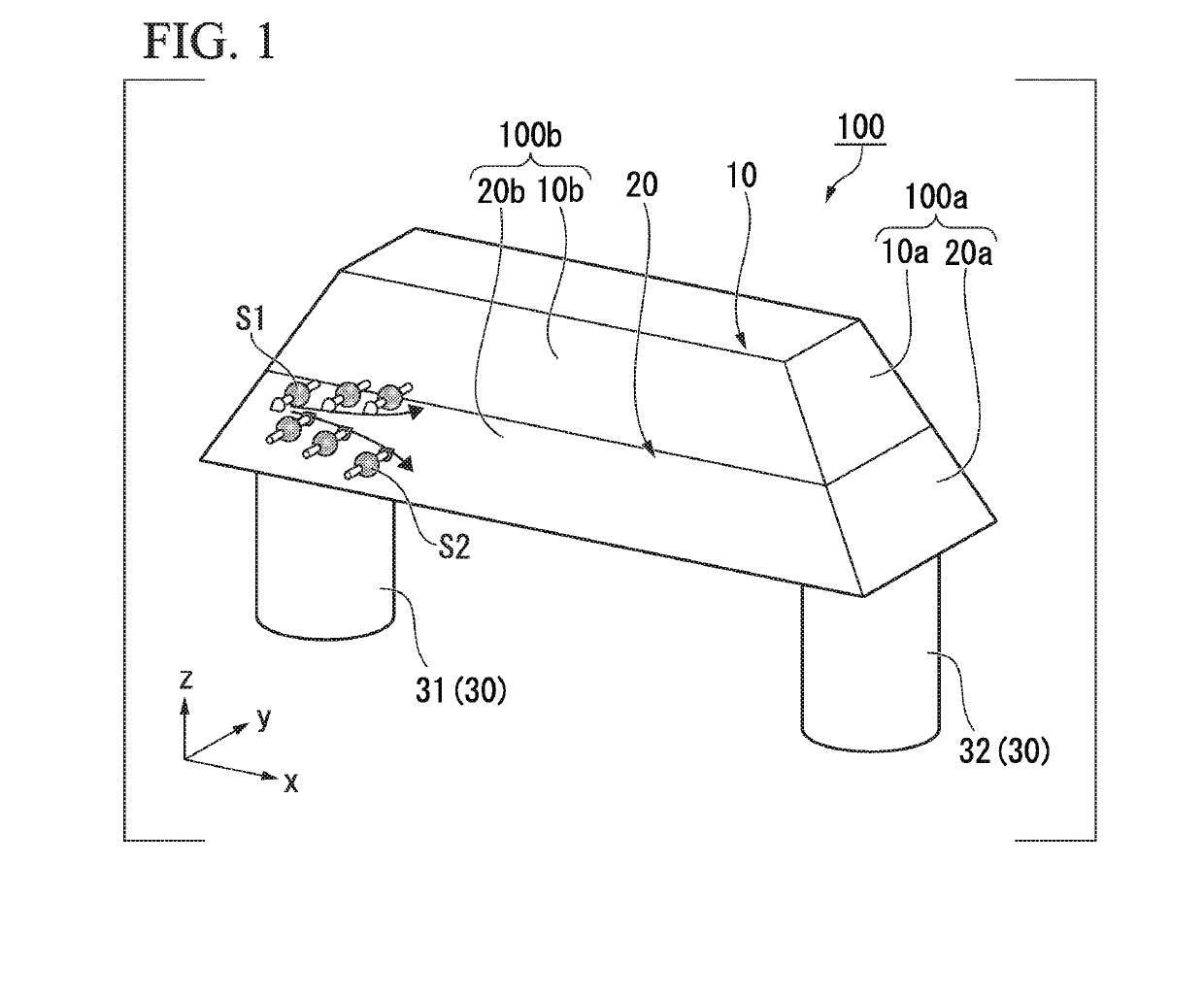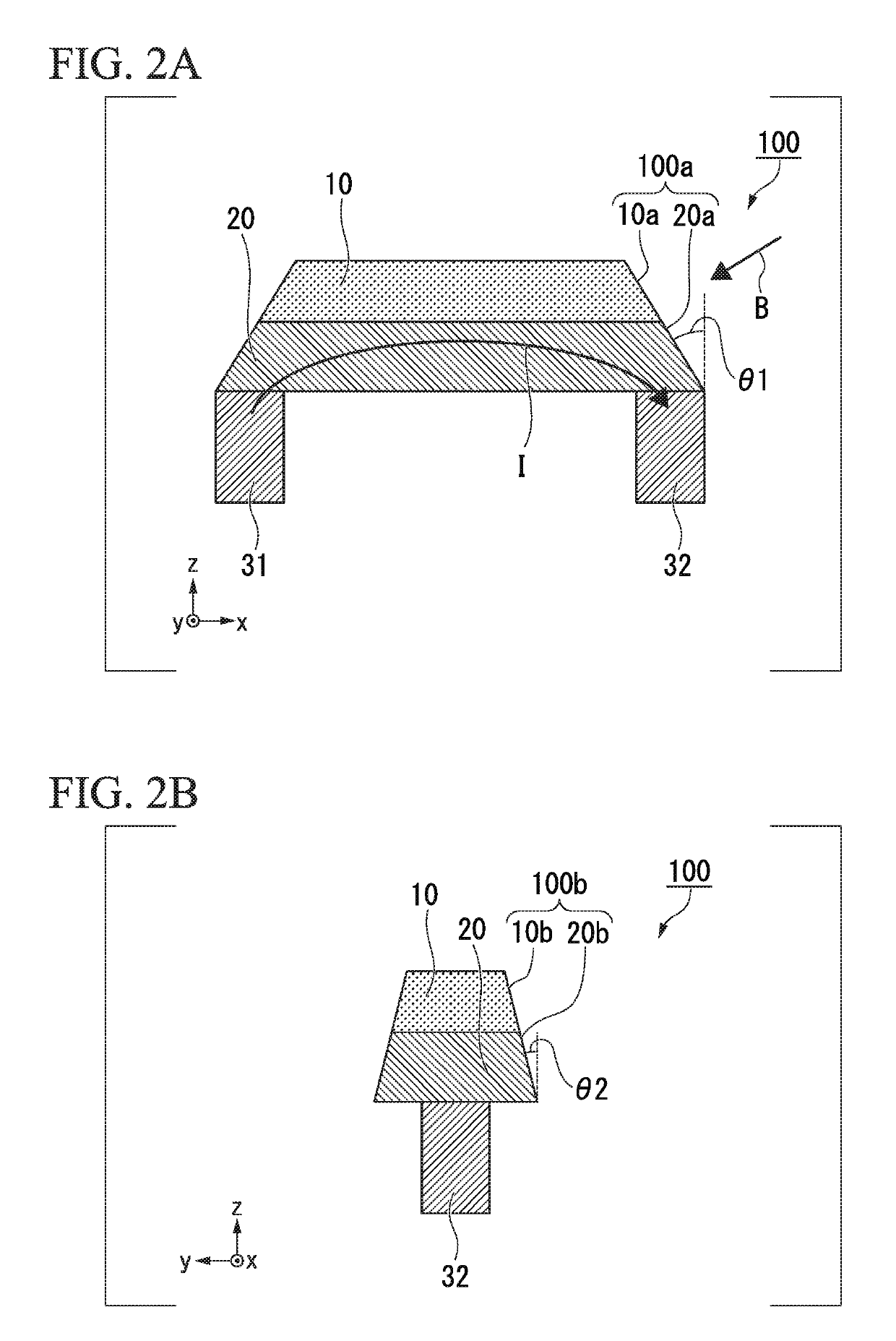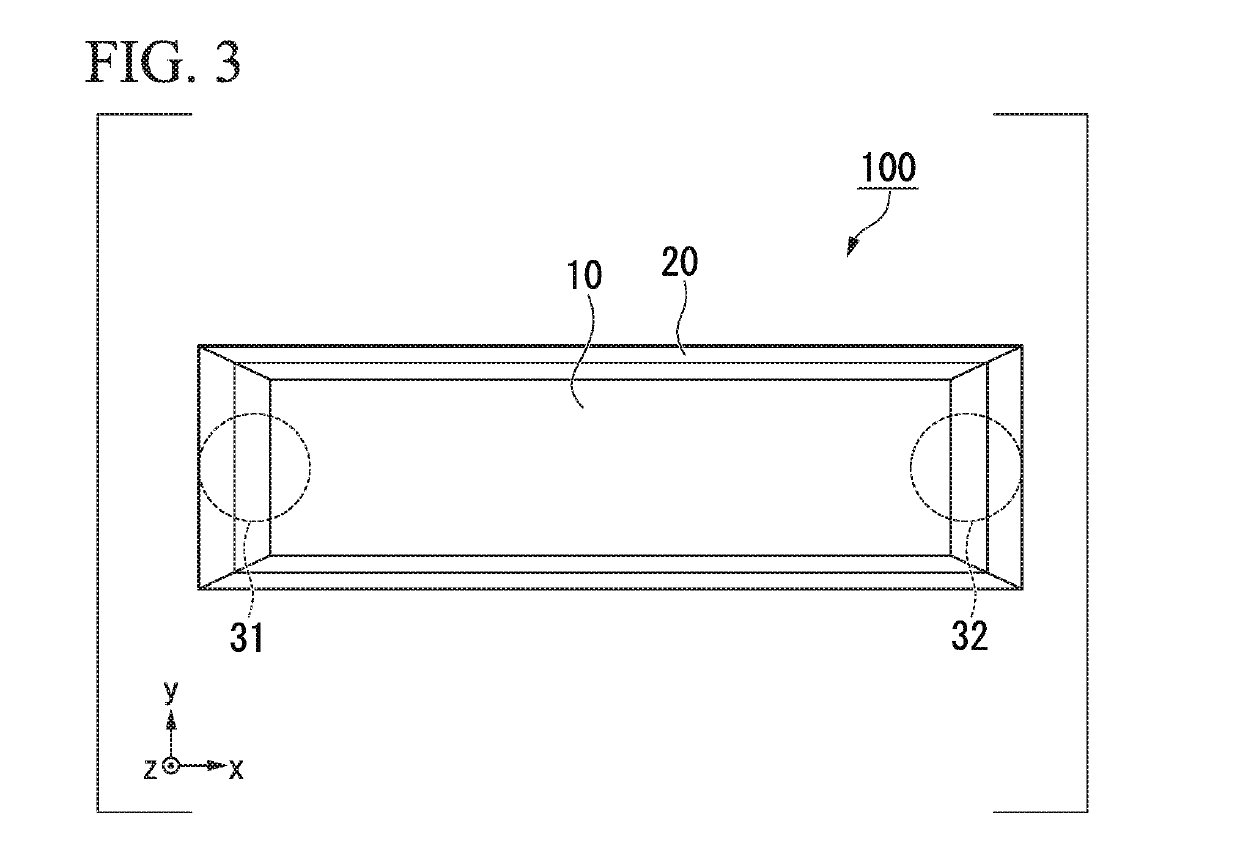Spin-orbit-torque magnetization rotational element, spin-orbit-torque magnetoresistance effect element, and magnetic memory
a spin-orbit torque and rotational element technology, applied in the direction of galvano-magnetic hall-effect devices, magnetic bodies, instruments, etc., can solve the problems of unstable magnetization of ferromagnetic substances, heat generation of spin-orbit torque wiring, and impurities, etc., to achieve easy writing current flow and easy magnetization
- Summary
- Abstract
- Description
- Claims
- Application Information
AI Technical Summary
Benefits of technology
Problems solved by technology
Method used
Image
Examples
first embodiment
[0034]Spin-Orbit-Torque Magnetization Rotational Element
[0035]FIG. 1 is a perspective view schematically illustrating a spin-orbit-torque magnetization rotational element according to a first embodiment. In addition, FIGS. 2A and 2B are cross-sectional views schematically illustrating the spin-orbit-torque magnetization rotational element according to the first embodiment.
[0036]A spin-orbit-torque magnetization rotational element 100 according to the first embodiment includes a first ferromagnetic layer 10 and a spin-orbit torque wiring 20. In addition, the spin-orbit-torque magnetization rotational element 100 illustrated in FIG. 1 further includes two via wirings 30 (a first via wiring 31 and a second via wiring 32). Hereinafter, a first direction in which the spin-orbit torque wiring 20 extends is defined as an x direction, a second direction that intersects the x direction in a plane in which the spin-orbit torque wiring 20 extends is defined as a y direction, and a direction th...
second embodiment
[0096]Spin-Orbit-Torque Magnetoresistance Effect Element
[0097]FIGS. 7A and 7B are schematic cross-sectional views of a spin-orbit-torque magnetoresistance effect element according to a second embodiment. A spin-orbit-torque magnetoresistance effect element 200 illustrated in FIGS. 7A and 7B includes the spin-orbit-torque magnetization rotational element 103 illustrated in FIGS. 6A and 6B, a second ferromagnetic layer 60, and a nonmagnetic layer 70. The second ferromagnetic layer 60 is disposed to face a side of the first ferromagnetic layer 10 which is opposite to the spin-orbit torque wiring 20. The nonmagnetic layer 70 is interposed between the first ferromagnetic layer 10 and the second ferromagnetic layer 60. In addition, the spin-orbit-torque magnetization rotational element 103 is illustrative only, and the configurations illustrated in FIGS. 2A and 2B, and FIGS. 5A and 5B may be used.
[0098]A laminated body (functional part 80) in which the first ferromagnetic layer 10, the no...
third embodiment
[0107]Magnetic Memory
[0108]FIG. 8 is a plan view of a magnetic memory 300 including a plurality of the spin-orbit-torque magnetoresistance effect elements 200 (refer to FIGS. 7A and 7B). In the magnetic memory 300 illustrated in FIG. 8, the spin-orbit-torque magnetoresistance effect elements 200 are arranged in a matrix of 3×3. FIG. 8 is an example of a magnetic memory, and the number of the spire-orbit-torque magnetoresistance effect elements 200 and the arrangement thereof are arbitrary.
[0109]One of word lines WL1 to WL3, one of source lines SL1 to SL3, and one of read lines RL1 to RL3 are connected to each of the spin-orbit-torque magnetoresistance effect elements 200.
[0110]When the word lines LW1 to LW3, and the source lines SL1 to SL3 are selected to apply a current, the current is allowed to flow to the spin-orbit torque wiring 20 of arbitrary spin-orbit-torque magnetoresistance effect element 200, and a write operation is performed. In addition, when the read lines RL1 to RL3...
PUM
 Login to view more
Login to view more Abstract
Description
Claims
Application Information
 Login to view more
Login to view more - R&D Engineer
- R&D Manager
- IP Professional
- Industry Leading Data Capabilities
- Powerful AI technology
- Patent DNA Extraction
Browse by: Latest US Patents, China's latest patents, Technical Efficacy Thesaurus, Application Domain, Technology Topic.
© 2024 PatSnap. All rights reserved.Legal|Privacy policy|Modern Slavery Act Transparency Statement|Sitemap



